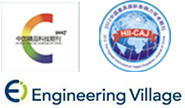Abstract:
To reduce the porosity of 3D printing continuous fiber reinforced polymer (CFRP) composites and improve the degree of resin impregnation on fibers, it is of great necessity to conduct research on the preparation and 3D printing performance of melt-impregnated continuous fiber prepreg filaments, as well as develop integrated fiber prepreg equipment. With glass fiber (GF) and carbon fiber (CF) as reinforcement, and polycarbonate (PC) as matrix, this study aims to develop a melt-impregnated prepreg wire preparation process and study the influence of the impregnation process on prepreg wire properties. Besides, using prepreg yarn as the raw material, this study is aimed at studying the effect of 3D printing forming process parameters on the fiber content, porosity and mechanical properties as well. The results indicate that when the tensile strength of continuous glass fiber reinforced polycarbonate (CGF/PC) prepreg filament is 627.8 MPa, the printing temperature is 260℃, the layering thickness is 0.10 mm, the scan spacing is 1.0 mm, the fiber content of continuous carbon fiber reinforced polycarbonate (CCF/PC) composite is 28.66vol%, the tensile strength and modulus are respectively 644.8 MPa and 85.6 GPa, and the optimized porosity is 3.87%. When the printing temperature is 280℃, the layering thickness is 0.14 mm, and the scan spacing is 1.2 mm, the fiber content of continuous glass fiber reinforced polycarbonate (CGF/PC) composite turn out to be 51.35vol%, the tensile strength and modulus are respectively 381.4 MPa and 23.6 GPa, and the optimized porosity is 4.41%.


 下载:
下载: